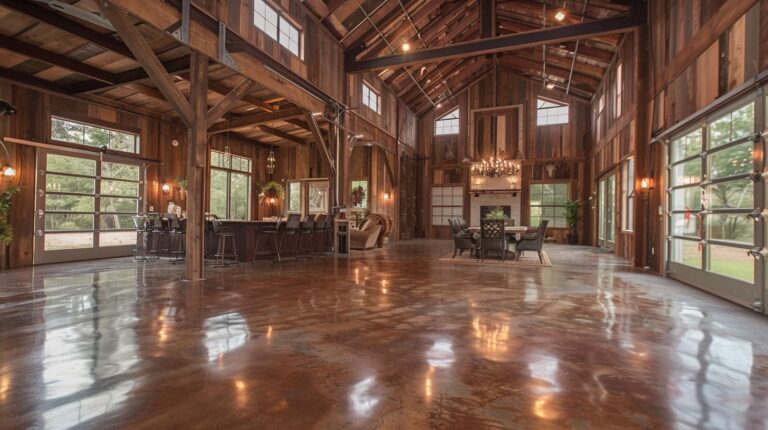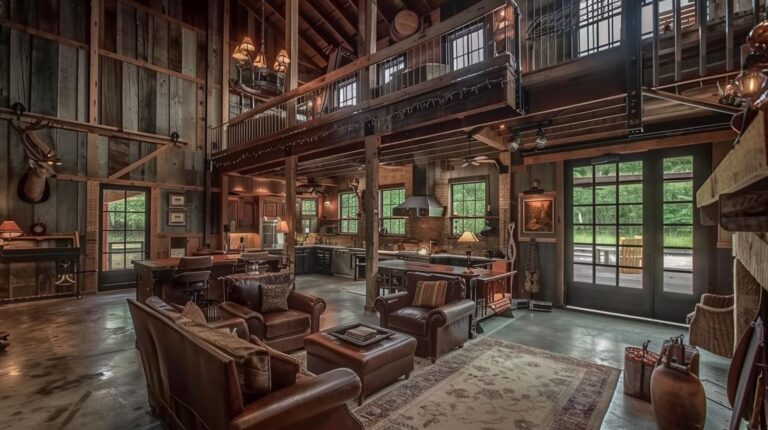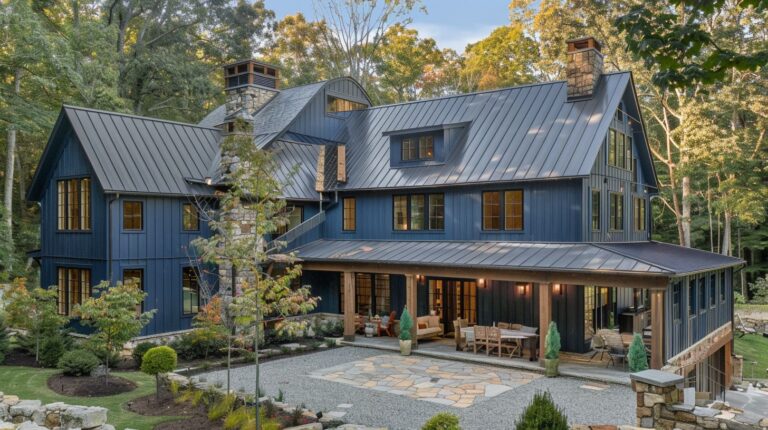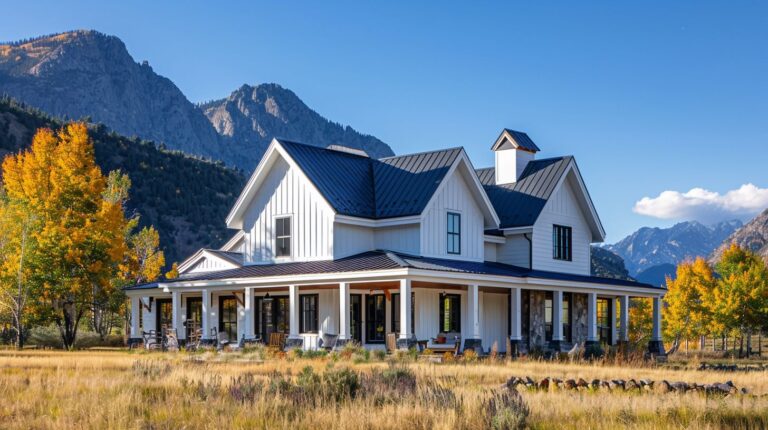Barndominium Pros and Cons, According to Experts
Barndominiums, a combination of “barn” and “condominium,” have surged in popularity as an innovative living solution, offering a blend of rustic charm and modern amenities.
This unique type of residence combines the architectural skeleton of a barn with the comfort and design of a home, resulting in a versatile and often cost-effective living space. As with any housing choice, there are both advantages and disadvantages that need to be considered.
Let’s explore the various pros and cons of owning a barndominium to help you make an informed decision.
Key Takeaway Table
| Pros of Owning a Barndominium | Cons of Owning a Barndominium |
|---|---|
| Cost-effectiveness: Generally lower construction cost per square foot compared to traditional homes. | Financing and Insurance Challenges: Obtaining financing and insurance can be more difficult due to their unconventional nature. |
| Durability and Maintenance: Resistant to severe weather, fire, and pests with less maintenance required. | Resale Value and Market Perception: Potentially limited market appeal and unpredictable resale value. |
| Energy Efficiency: Designed with energy-saving features, leading to reduced heating and cooling costs. | Temperature Control and Insulation: Metal constructions can struggle with insulation, affecting comfort and energy costs. |
| Customization and Versatility: Open floor plans allow for a wide range of layouts and designs. | Acoustics: Hard surfaces inside can lead to increased noise levels, requiring additional planning to mitigate. |
| Speed of Construction: Faster construction times due to the prefabricated nature of many barndominium kits. | Zoning and Building Codes: Potential challenges with local zoning laws and building codes that may restrict construction. |
Pros of Owning a Barndominium
1. Cost-Effectiveness One of the most touted benefits of barndominiums is their cost-effectiveness. Generally, the construction cost per square foot can be lower than that of traditional homes, primarily due to the simplicity of their design and the use of metal construction materials which are cheaper and faster to assemble.
2. Durability and Maintenance Barndominiums are renowned for their durability. Metal barndominiums, in particular, withstand severe weather conditions better than traditional homes. They’re resistant to wind, fire, and pests like termites. Additionally, metal buildings require less maintenance, making them a more sustainable and hassle-free option in the long run.
3. Energy Efficiency Many barndominiums are designed with energy efficiency in mind. The use of insulated panels and energy-efficient windows can lead to significant savings on heating and cooling costs. Their open floor plans also allow for better air circulation, further contributing to energy conservation.
4. Customization and Versatility Barndominiums offer vast opportunities for customization. Their open floor plans can be designed to fit any lifestyle, from a simple, open loft-like space to a more traditional home layout with separate rooms. This versatility makes them appealing to a wide range of homeowners, from singles and couples to large families.
5. Speed of Construction The construction of a barndominium can be significantly quicker than that of a traditional home. The prefabricated nature of many barndominium kits means that the shell of the building can be erected in a matter of days or weeks, not months.
Cons of Owning a Barndominium
1. Financing and Insurance Challenges Obtaining financing for a barndominium can be more challenging than for a traditional home. Some lenders are hesitant to finance barndominiums due to their unconventional nature and perceived risk. Similarly, finding insurance providers willing to cover barndominiums at reasonable rates can sometimes be difficult.
2. Resale Value and Market Perception The resale value of barndominiums can be unpredictable. While there is a growing interest in these types of homes, they may not appeal to the traditional homebuyer, potentially limiting the market when it comes time to sell. The perception of barndominiums as less traditional homes can also impact their appraisal value.
3. Temperature Control and Insulation While metal barndominiums are durable, they can also pose challenges in terms of temperature control and insulation. Without proper insulation, these buildings can become hot in the summer and cold in the winter, leading to higher energy costs and discomfort.
4. Acoustics The acoustics in a metal building can be problematic. Sound tends to bounce off hard surfaces, leading to increased noise levels inside the home. This can be mitigated with the use of soft furnishings and acoustic panels, but it requires additional planning and expense.
5. Zoning and Building Codes Potential barndominium owners may face challenges with zoning laws and building codes, which can vary significantly from one municipality to another. Some areas may have restrictions on the construction of metal buildings for residential use, requiring additional paperwork and modifications to meet local standards.
Conclusion
Barndominiums offer a unique and flexible approach to modern living, blending the aesthetic appeal of traditional barns with the comfort of contemporary homes.
While they present a cost-effective and customizable housing option, potential owners should carefully consider the challenges associated with financing, resale value, temperature control, and local zoning laws.
As the trend continues to grow, so too does the community of resources and professionals specializing in barndominium construction and design, making it easier for interested buyers to navigate these challenges. Ultimately, whether a barndominium is the right choice depends on individual preferences, lifestyle, and long-term housing goals.







